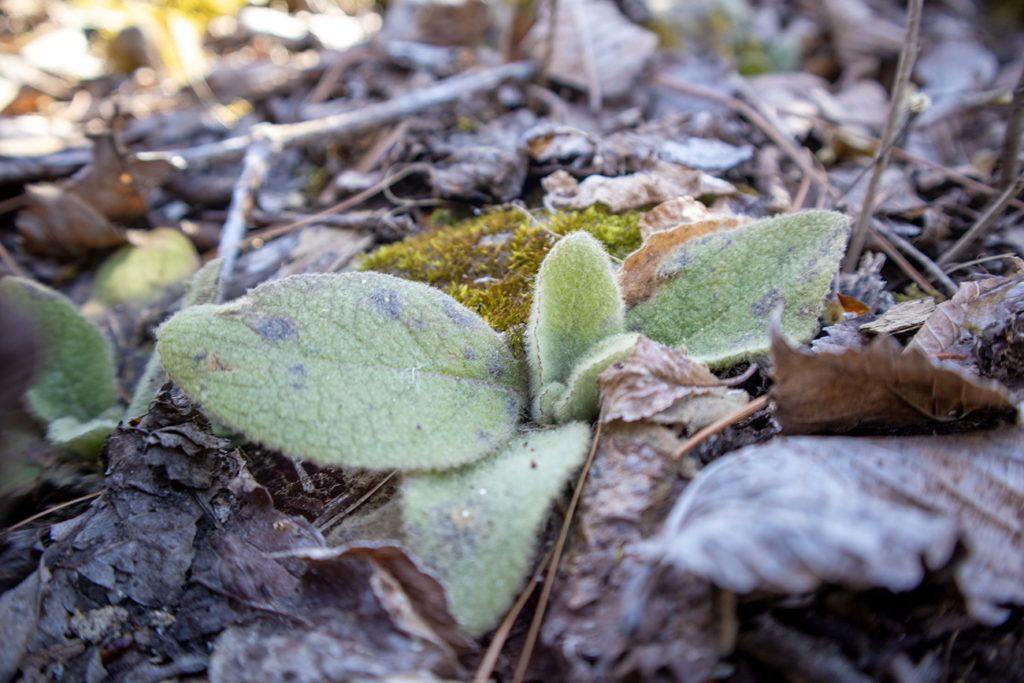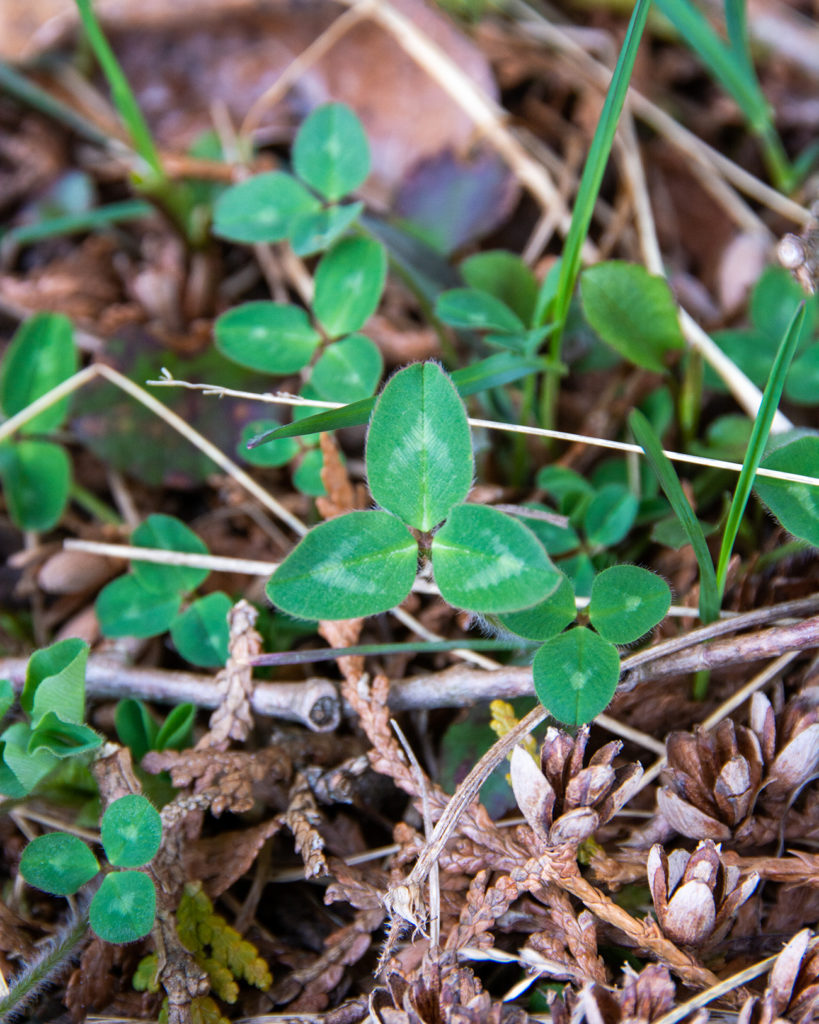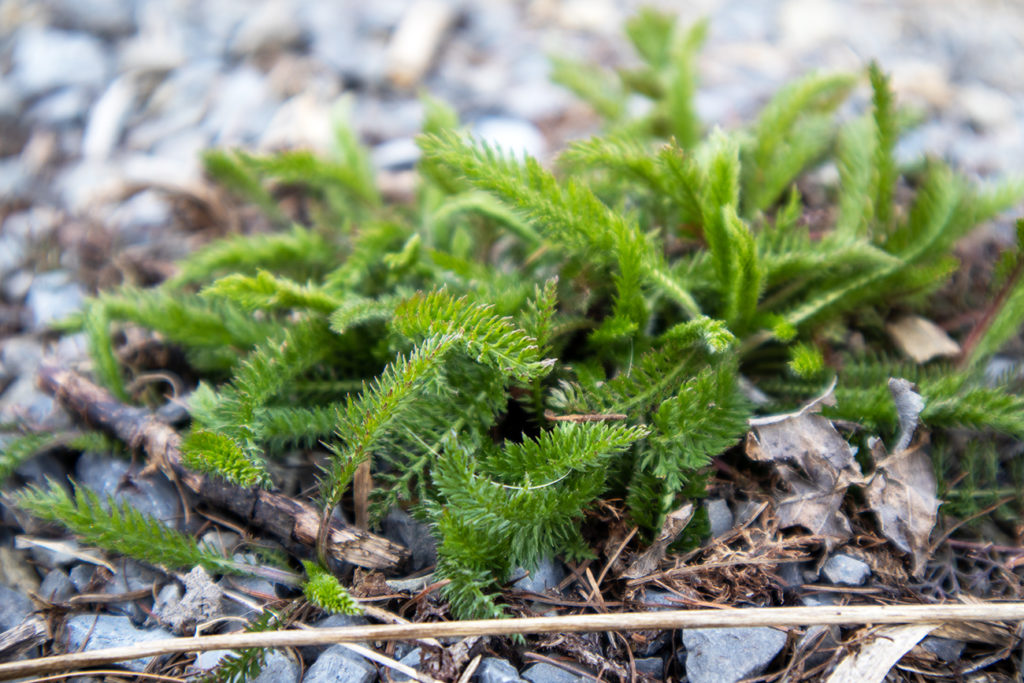Here in southeastern Ontario, plants are beginning to emerge after a long and cold winter. It’s wonderful to see the landscape transform with spring growth. In this post, I discuss some common spring plants and their uses.
In the spirit of staying close to home, I’ve picked plants that grow commonly in backyards and in city green spaces. You can find many of them throughout Canada and the United States. Some will be familiar to you, but you might be surprised to learn about their culinary, medicinal, and other uses.
Common Mullein

Common mullein (Verbascum thapsus) has large, grey-green leaves that are soft and fuzzy. It’s a biennial plant. The first year, it grows a rosette. The second year, the plant grows a flowering stem that can reach 2 meters in height! The flowers are a beautiful yellow colour and bloom from May to September.
You’ll find mullein throughout Canada, but it grows most commonly in the Maritime provinces, Quebec, Ontario, and British Columbia. It thrives in poor and disturbed soils.
Culinary Uses: You can make tea from mullein leaves and flowers. Steep the dry leaves and flowers for 5-10 minutes.
Herbal and Traditional Uses: Traditionally, mullein was a treatment for respiratory problems and mullein poultices were used to treat rashes and skin infections. People still use an oil made from mullein to treat earaches.
Other Uses: Mullein has many other uses. If your feet are sore or cold, you can use its soft leaves to line your shoes. Some say, it makes a good natural toilet paper. The stems dipped in suet or wax make excellent torches and the flowers can be used as a dye. Finally, mullein seeds are toxic to fish and can be used to stun and catch them.
Wildlife: Many insects rely on mullein leaves as a source of food. Bees will gather nectar from the flowers. A few birds will eat the seeds and use the soft leaves to line their nests.
Caution: For some people, mullein causes skin and throat irritation.
Red Clover

Red clover (Trifolium pratense) has compound leaves with three oval leaflets. There’s a light v-mark pattern (chevron) on the leaves. The plant produces a cluster of tubular pink flowers from April to September. Red clover stems are hairy and hollow.
Red clover grows in every province in Canada. You’ll find it in open spaces like meadows, lawns, and fields.
Culinary Uses: You can eat the flowers and leaves of red clover. That said, red clover can be difficult to digest in large quantities. Soaking or cooking the plant will make it more digestible. You can cook red clover leaves like you would spinach. Try dipping the flowers in batter to make delicious red clover fritters. You can also pound dried flowers into a flour for baking. I like adding soaked flowers to salads for a bit of colour.
Herbal and Traditional Uses: Traditionally, people used red clover to help with respiratory illnesses. Today, it’s used to treat osteoporosis in post-menopausal women.
Wildlife: Red clover is an important food source for bumblebees, deer, groundhogs, rabbits, foxes, Canadian geese, partridge, and some species of butterflies, moths, and insects. Animals, like deer, rely on the plant for its high protein content.
Other Uses: Red clover produces a gold dye.
Caution: You should not consume red clover if you are pregnant or breast feeding. Red clover has caused miscarriage in some animals.
Dandelion

Many people can easily identify dandelion (Taraxacum officinale). The plant produces bright yellow flower heads that are later replaced by seed heads. The leaves form at the base of the plant. They are jagged and irregularly lobbed. Dandelion has a hollow stalk that “bleeds” a milky substance if you damage it.
Dandelion grows commonly throughout Canada and the United States. You can find it on lawns, roadsides, and fields.
Culinary Uses: You can eat the leaves, buds, flowers, and roots of dandelion. The young leaves are sweeter than the older bitter leaves. Some people make dandelion pesto from them. Try frying the buds in butter with a pinch of salt for a delicious snack. Roasted dandelion roots can be brewed to make a caffeine-free coffee substitute. This video shows how to make dandelion vinegar, tea, and salad.
Herbal and Traditional Uses: Dandelion has been used traditionally to help with digestion, liver and kidney issues, and skin conditions.
Wildlife: Dandelion is an important source of nectar and pollen for bees and other pollinators. Rabbits, squirrels, porcupines, and birds eat dandelion.
Other Uses: Use dandelion flowers to make a yellow dye.
Caution: The latex in the stems and leaves of dandelion may cause contact dermatitis in some people. Dandelion has some lookalikes (sow thistle and cat’s ear).
Yarrow

Yarrow (Achillea millefolium) has delicate lace-like leaves and white flowers that form flat-topped clusters. The flowers bloom from June to September. The plant can grow up to 3 feet tall.
Yarrow grows throughout the Northern Hemisphere. You’ll find it in fields, roadsides, and in disturbed soils.
Culinary Uses: Yarrow is very bitter. The leaves make a great tea. Check out this yarrow penne recipe. The author offers some tips for cooking with yarrow. Yarrow also works as a hop substitute for beer.
Herbal and Traditional Uses: Some people apply yarrow poultices to wounds and burns. They say yarrow helps alleviate pain and seal wounds. Some Indigenous peoples chewed the leaves to sooth toothaches.
Wildlife: Yarrow is a great flower for pollinators. Some cavity nesting birds use it to line their nests.
Caution: Beginner foragers should avoid yarrow. It has many poison lookalikes including fool’s parsley and poison hemlock. Yarrow is toxic to dogs, cats, and some other animals.
Caution When Foraging Common Spring Plants
This post is for educational purposes only. This is by no means a complete guide for identifying plants. Always do your own research on plant identification by consulting experts and reputable field guides. While I take care to identify plants, I’ve been wrong on occasion.
You should never use any medicinal plant without first consulting your doctor. The scientific literature does not always support the traditional and herbal uses of these plants.
Check out my post on Foraging Sustainably.